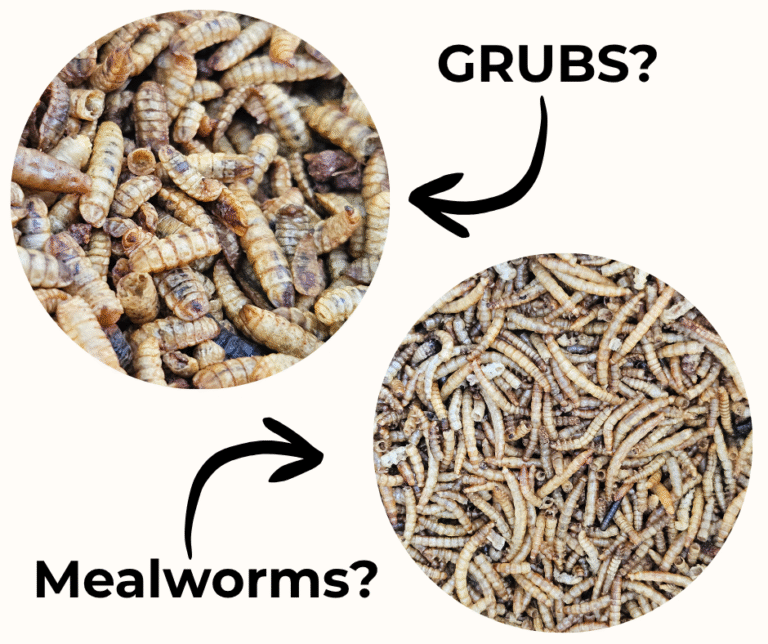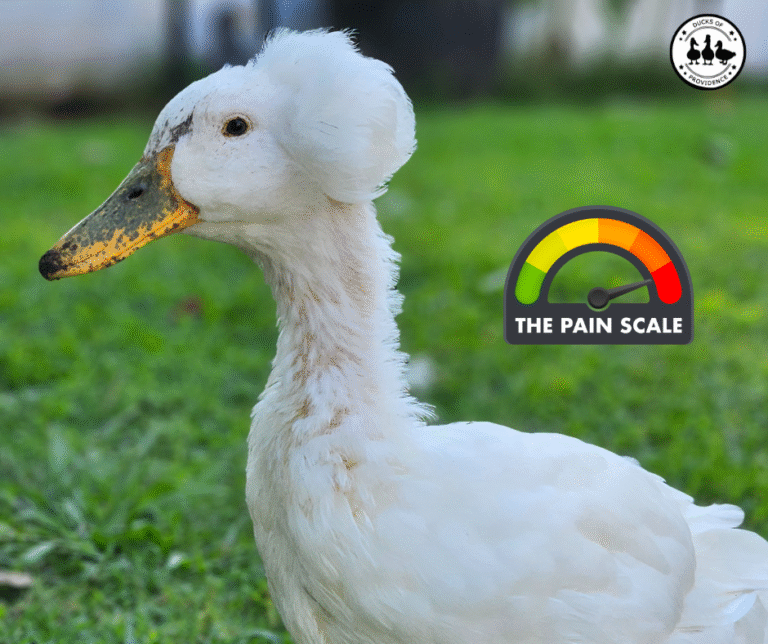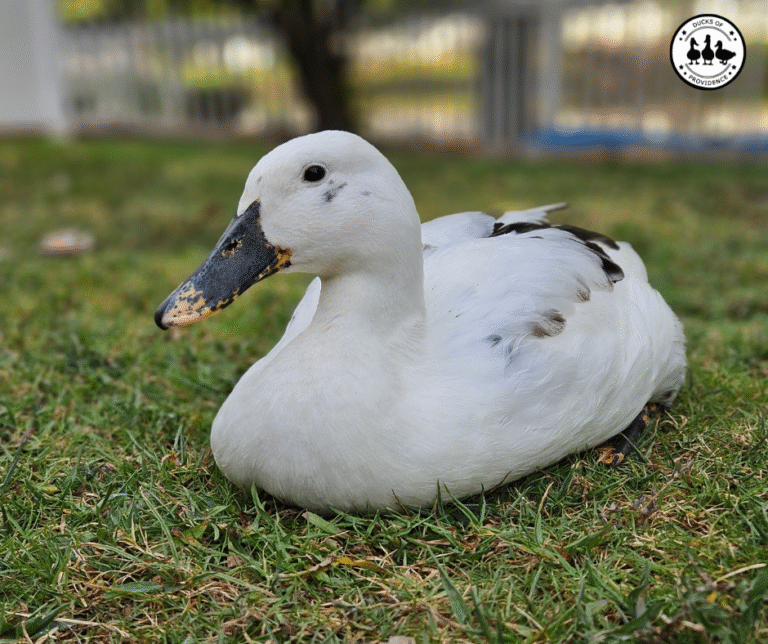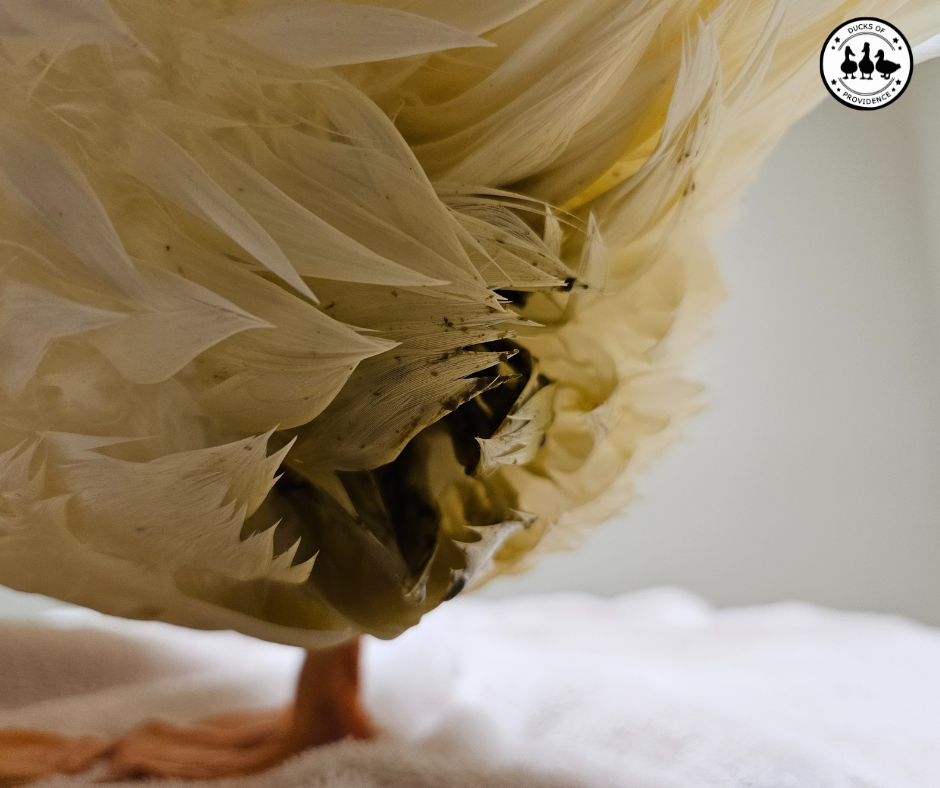
Prolapsed Vent in Ducks: Causes, Treatment, and Prevention
Last updated on June 21st, 2025 at 03:16 pm
As duck keepers, we always want what’s best for our feathered friends. But sometimes, health issues pop up that can be alarming—like a prolapsed vent in ducks. If you’ve never dealt with this before, it can be downright scary to see your duck with swollen, red tissue sticking out of her backside. But don’t worry—you’re not alone, and this isn’t the end of the road for your duck.
A prolapsed vent is a serious condition, but with quick action and the right care, many ducks recover just fine. In this guide, I’ll walk you through everything you need to know: what causes prolapse, how to treat it, and what you can do to prevent it from happening in the first place. Whether you’re a first-time duck keeper or a seasoned pro, this is one of those things that’s always good to be prepared for. So let’s dive in!
🩺 This article is part of our Duck Health Conditions Series.
Ducks of Providence is free, thanks to reader support! Ads and affiliate links help us cover costs—if you shop through our links, we may earn a small commission at no extra cost to you. Thanks for helping keep our content free and our ducks happy! 🦆 Learn more
What is a Prolapsed Vent in Ducks?
If you’ve ever noticed something red and swollen sticking out of your duck’s backside, don’t panic—but do act fast. A prolapsed vent happens when the cloaca (the opening where ducks lay eggs and poop) or part of the reproductive or intestinal tract pushes outward instead of staying where it belongs. It’s not just uncomfortable for your duck—it can be life-threatening if left untreated. This is sometimes also called blowout or blow-out.
This condition is most common in laying hens, but any duck can experience it under the right (or rather, wrong) conditions. The good news? With quick intervention, many ducks recover fully. Let’s talk about what causes it and how to help your feathered friend.
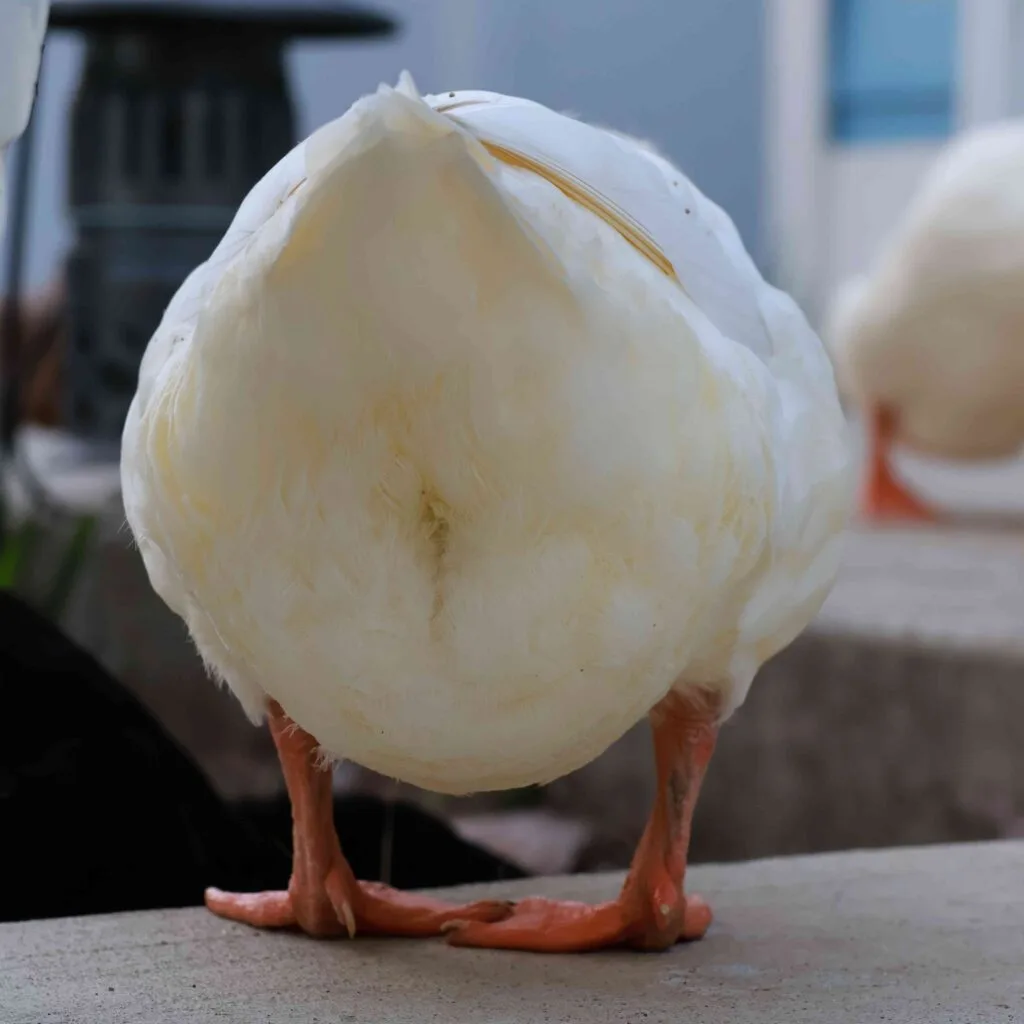
Causes of Prolapsed Vent in Ducks
A prolapse doesn’t just happen out of nowhere—there’s usually an underlying reason. Here are some of the most common causes:
⚠️ Egg Binding – If a duck struggles to pass an egg, it can put excessive pressure on the vent, leading to prolapse.
⚠️ Frequent or Oversized Eggs – Some ducks lay large eggs, and if their bodies aren’t equipped for it, they may strain too much.
⚠️ Nutritional Deficiencies – A lack of calcium, protein, or vitamin D weakens muscles, making it harder for the duck to push properly.
⚠️ Obesity – Extra weight increases pressure on the reproductive system.
⚠️ Straining from Constipation – Hard droppings = more pushing = higher risk of prolapse.
⚠️ Infections or Injuries – Infections in the reproductive tract or vent area can cause swelling and weaken tissue.
⚠️ Hormonal Imbalances – Ducks laying too often, especially due to artificial lighting, may experience more stress on their system.
1. Egg Binding
Egg binding occurs when a duck can’t pass an egg, leaving it stuck inside the reproductive tract. This leads to intense straining, which can force part of the vent tissue outward, resulting in prolapse.
- What causes egg binding?
- Calcium deficiency (weak muscles can’t push the egg out properly).
- Oversized or soft-shelled eggs.
- Cold weather slowing muscle function.
- Signs of egg binding:
- Lethargy, tail bobbing, or sitting in a strained posture.
- Frequent visits to the nest box without laying.
- Swollen or red vent area.
Egg binding is a serious issue that often requires immediate intervention, as an untreated case can lead to death.
➡️ Learn more about egg binding in ducks.
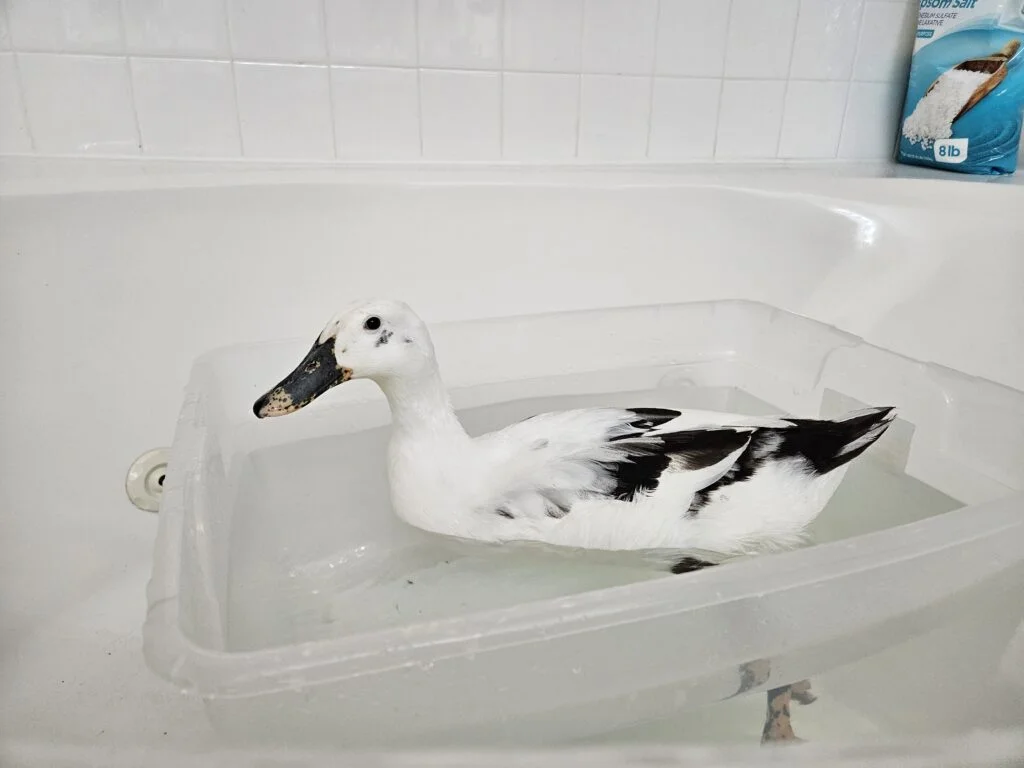
2. Frequent or Oversized Eggs
Some ducks are overachievers when it comes to laying. If a duck is producing eggs too frequently or larger than her body can handle, her vent may stretch too much, increasing the risk of prolapse.
- Breeds like Khaki Campbells, Runners, and high-production hybrids are more prone to over-laying.
- Certain ducks consistently lay extra-large eggs, which are harder to pass.
If you notice your duck laying eggs too frequently or unusually large ones, it may be worth considering hormonal implants to slow down egg production and protect her health.
3. Nutritional Deficiencies
Ducks need the right balance of nutrients to maintain strong reproductive health. Deficiencies in calcium, protein, or vitamin D can weaken the muscles responsible for pushing out eggs and waste, making prolapse more likely.
- Calcium Deficiency – Leads to soft-shelled eggs and weak muscle contractions. Offer oyster shell supplements to support healthy laying.
- Protein Deficiency – Weakens overall muscle strength, affecting egg-laying ability. Ensure your ducks have a quality layer feed.
- Vitamin D Deficiency – Without enough vitamin D, ducks can’t absorb calcium properly, even if they’re getting enough of it. Consider a vitamin D supplement if they don’t get enough sun exposure.
➡️ Learn more about the nutritional needs of ducks.
4. Obesity
Overweight ducks are at higher risk for prolapse because excess fat puts pressure on the reproductive system. Too much weight can also cause the oviduct to become sluggish, making it harder to lay eggs smoothly.
- How ducks gain too much weight:
- Overfeeding high-calorie treats (like corn and sunflower seeds).
- Lack of exercise and foraging opportunities.
- Feeding high-energy diets meant for meat birds.
Keeping your ducks at a healthy weight through a balanced diet and plenty of exercise helps prevent unnecessary strain on their reproductive system.
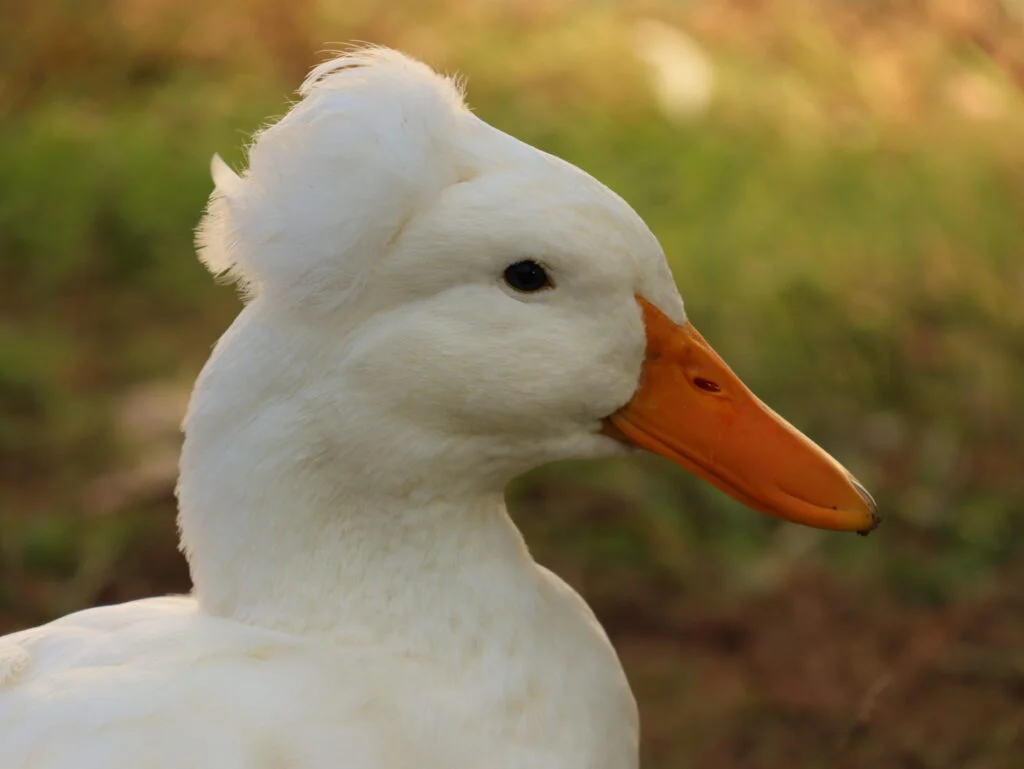
5. Straining from Constipation
A prolapse isn’t always related to egg-laying—sometimes, ducks strain too hard while pooping, pushing out the vent tissue. Constipation is often caused by:
- Dehydration – Ducks need constant access to clean water to keep their digestive system moving.
- Low-fiber diets – Ducks that eat mostly pellets without enough greens or forage may struggle with digestion.
- Illness or gut issues – If a duck isn’t feeling well, her digestion may slow down, leading to harder droppings.
To prevent constipation, make sure ducks always have fresh drinking water and access to natural foraging materials like grasses, leafy greens, and insects.
6. Infections or Injuries
An infection or injury to the reproductive tract or vent area can cause swelling, irritation, and tissue weakness, making prolapse more likely. Common causes include:
- Vent picking – Other ducks may peck at a laying duck’s vent, causing damage.
- Reproductive infections – Bacterial or fungal infections can inflame the oviduct.
- Rough mating – Drakes can sometimes injure the vent during mating, especially if they’re aggressive or the hen is smaller.
If you notice swelling, redness, or an unusual discharge from the vent, it’s a good idea to consult a poultry vet and consider using antiseptic wound sprays to prevent further irritation.
7. Hormonal Imbalances
Ducks that are laying too frequently or too early due to artificial lighting or hormonal changes are at a higher risk for prolapse. Their bodies aren’t always ready for the demands of egg production, leading to excessive strain.
- If you use artificial lighting, be careful not to extend daylight hours too much. Ducks should have a natural rest period to allow their bodies to recover.
- Hormonal fluctuations, especially in younger layers, can cause erratic laying patterns that stress the vent.
Signs and Symptoms of Prolapse in Ducks
How do you know if your duck has a prolapsed vent? Look out for these signs:
✅ A red, swollen, or bleeding mass sticking out of the vent
✅ Straining or frequent squatting, as if trying to lay an egg or poop
✅ Decreased appetite and energy levels
✅ Other ducks pecking at the vent (this can make things much worse)
If you spot any of these signs, it’s time to step in—quickly!
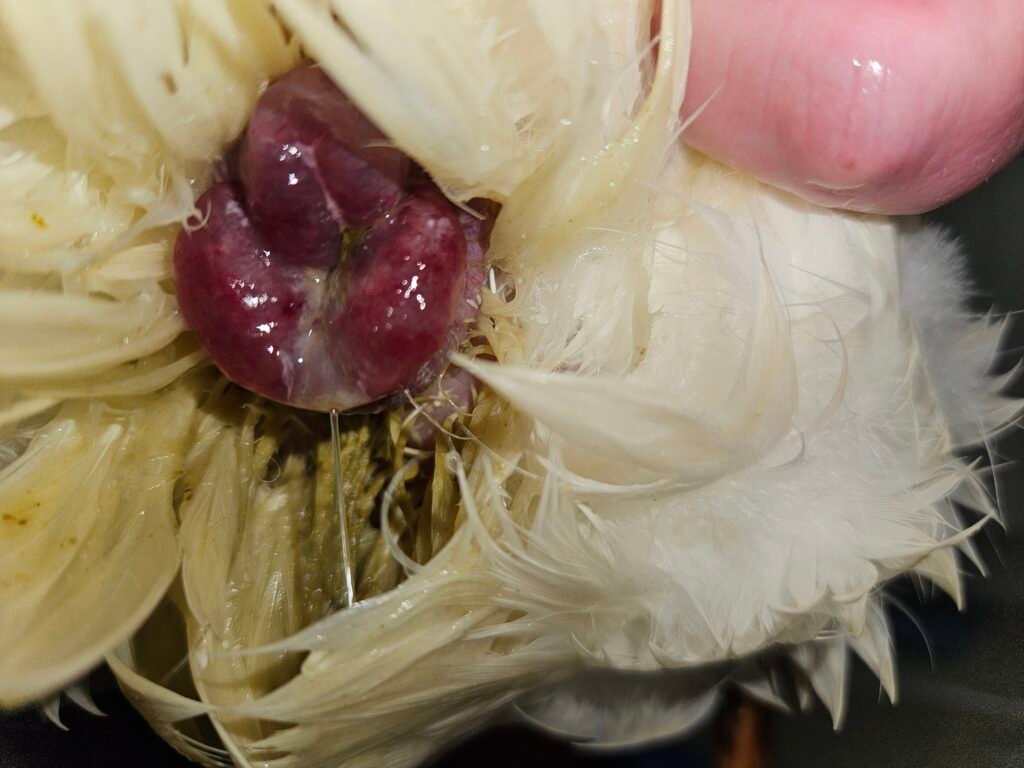
How to Treat a Prolapsed Vent in Ducks
If your duck has a prolapsed vent, acting quickly is key to giving her the best chance at recovery. Here’s what you should do:
Isolate the Duck
Move her to a quiet, dark place to reduce stress and prevent other ducks from pecking at the prolapse. A small pet crate or foldable playpen works well—something like the Petmate Aspen Pet Kennel or the Akinerri Portable Pet Play Pen can keep her safe and comfortable.
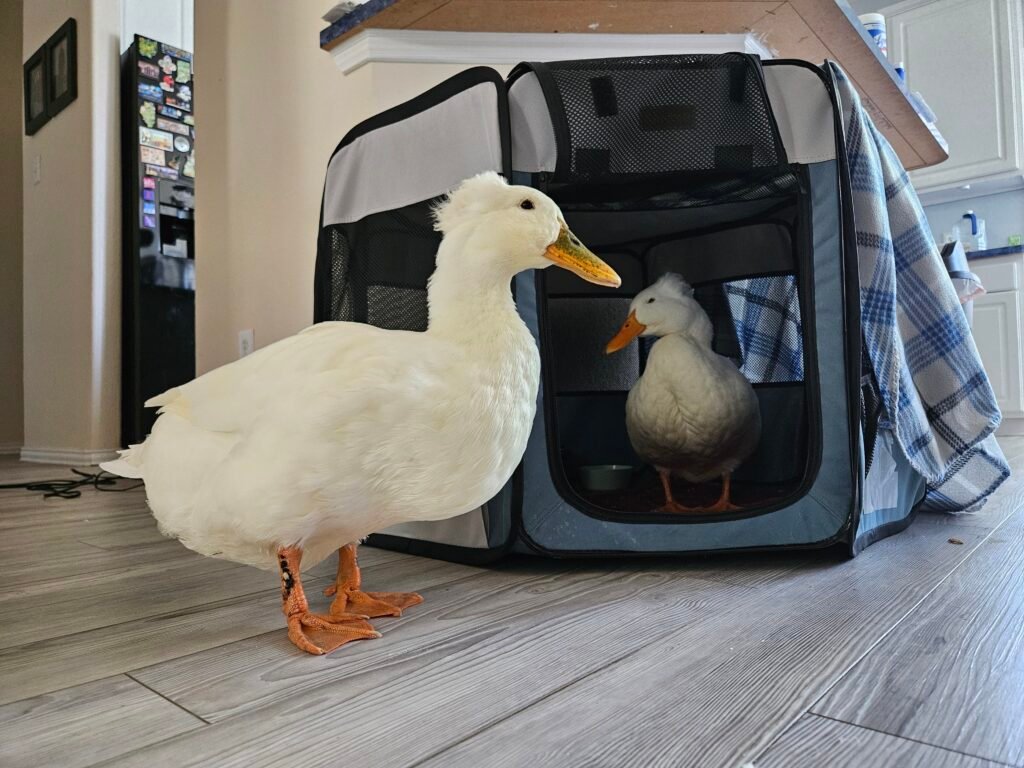
Check for a Stuck Egg
If your duck still has an egg inside her when you find her, you’ll need to help her pass it before treating the prolapse. Put on gloves and apply a water-based lubricant (like KY Jelly) around the vent. With extreme care and gentleness, guide the egg out—never force it. If the egg breaks, make sure to remove all shell fragments and seek veterinary help if you’re unsure whether anything is left behind.

Gently Clean the Prolapse
Once the egg is out (if one was present), clean the prolapsed tissue with warm water and a mild antiseptic. A saline solution or Vetericyn Plus Poultry Care Spray are good options for flushing the area without causing irritation. Avoid scrubbing or rubbing—be as gentle as possible.
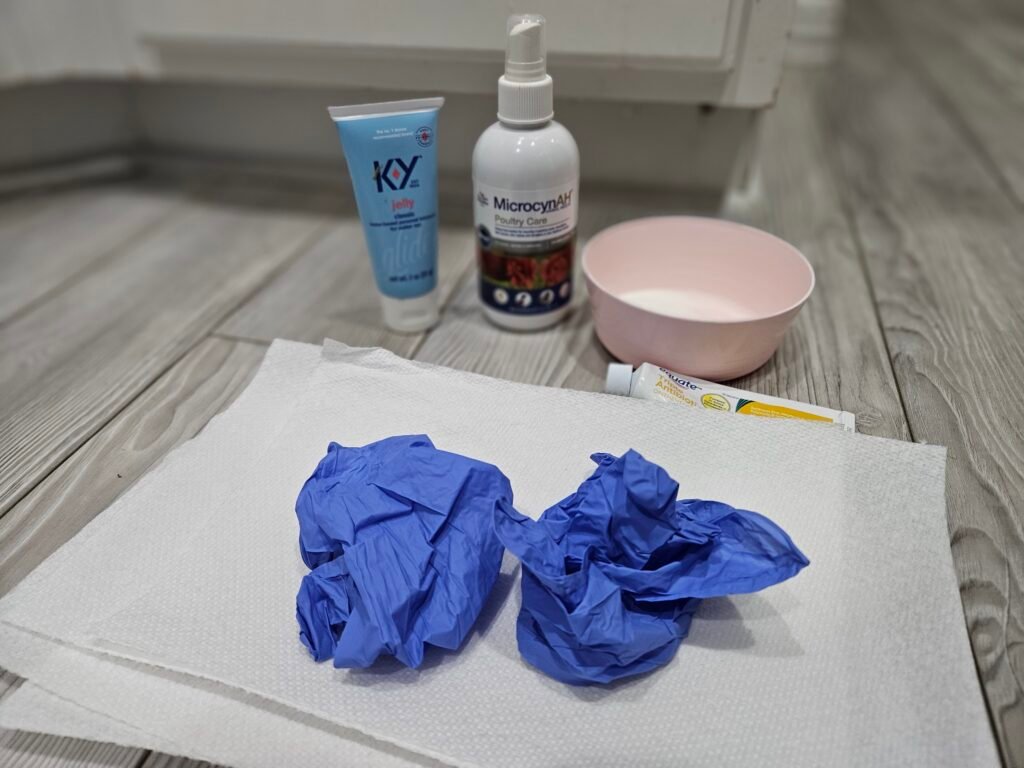
Reduce Swelling with Sugar
To help shrink the tissue and make repositioning easier, sprinkle plain granulated sugar directly onto the prolapse. Let it sit for 5–10 minutes. Sugar draws out excess fluid through osmosis, which can help the tissue retract. You can also apply a sugar-water compress if you prefer.
Apply a Healing Agent
Once clean and less swollen, apply Manuka honey for its natural antibacterial and soothing properties, or use an over-the-counter antibiotic ointment. Avoid any creams or sprays that contain painkillers ending in “-caine” (such as benzocaine or lidocaine), as these are toxic to ducks.
Gently Reposition the Tissue
With clean hands or a gloved finger, carefully push the prolapsed tissue back into the vent, using KY Jelly as lubricant. If it keeps coming back out, applying more sugar before attempting again can help reduce swelling further.
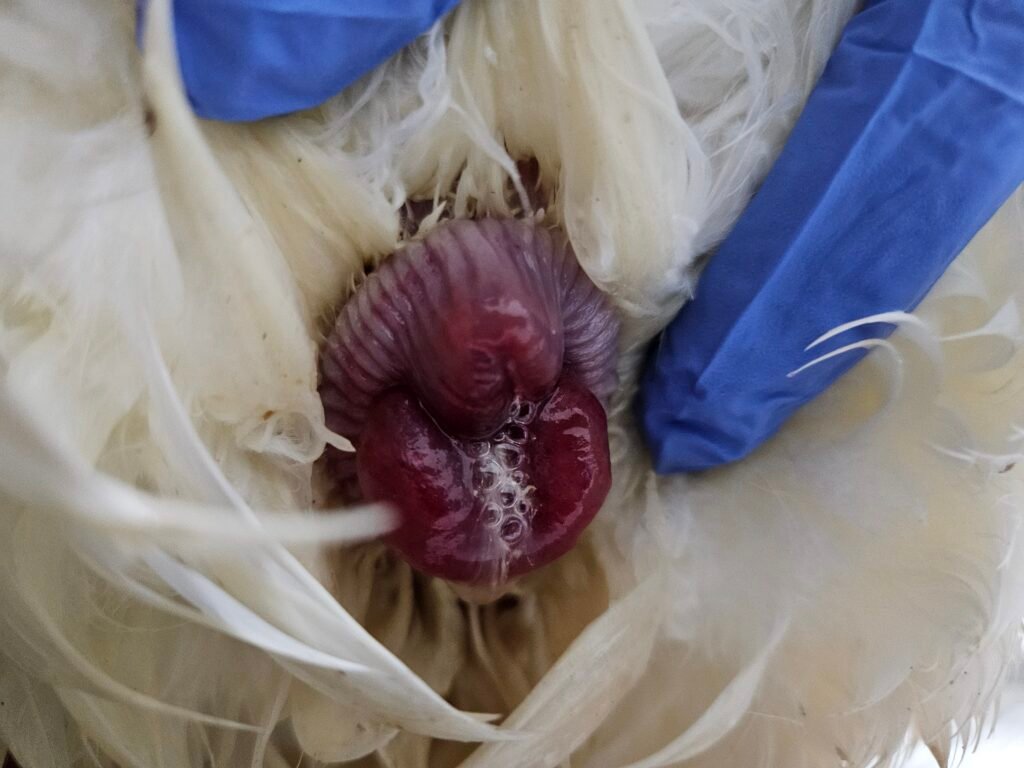
Ongoing Care and Rest
Keep your duck indoors in a clean, dimly lit space for a few days to give her time to heal. Limiting light exposure helps suppress her reproductive cycle and discourages additional egg-laying, which is crucial for recovery. Continue to monitor the area, reapplying Manuka honey or Vetericyn spray to keep it clean and moist. Offer supportive care like calcium-rich treats and plenty of hydration during her recovery.
Supportive Care for Recovery
Prolapse often happens due to underlying issues, so supportive care is essential for a full recovery:
- Limit Egg-Laying for a While – If your duck is a frequent layer, reducing her laying cycle can help prevent a recurrence. A veterinarian may recommend hormone implants or dietary adjustments to slow egg production.
- Increase Calcium Intake – Weak muscle tone can contribute to prolapse, so make sure she’s getting enough calcium. Offer oyster shell supplements, Avian Calcium, or crush up eggshells into her food.
- Hydration & Nutrition – Provide fresh water with added electrolytes to keep her hydrated. You can also mix in probiotics for gut health.
- Encourage Rest – Keep her in a low-stress environment with minimal movement for a few days to allow healing.
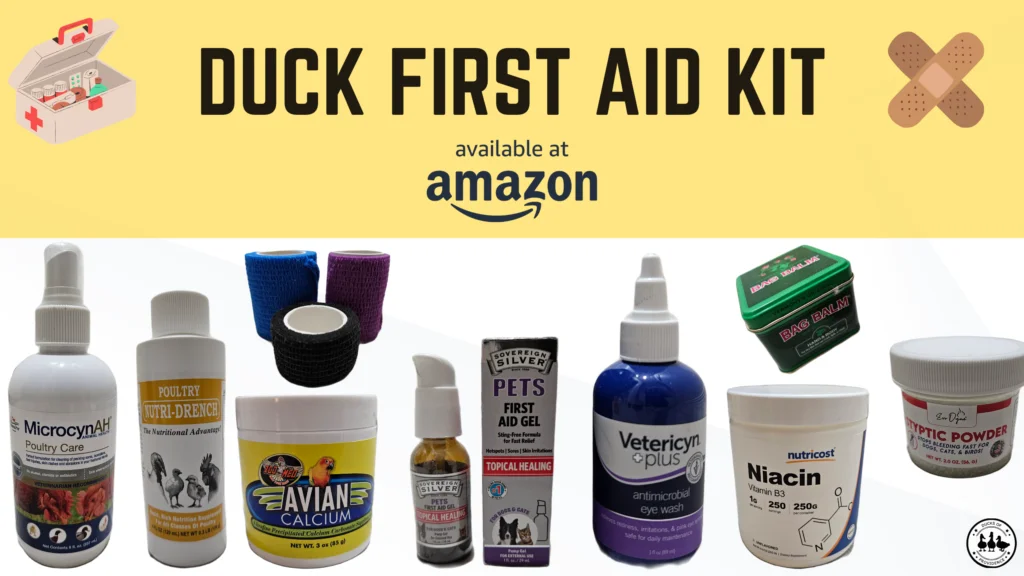
⚕️ A well-stocked first aid kit can make all the difference in an emergency, including cases of vent prolapse. From wound care to supportive treatments like avian calcium, having the right supplies on hand ensures you’re prepared for any unexpected situation. We’ve put together a curated list of useful items on our Amazon list, making it easy to find essential first-aid supplies for your flock.
When to See a Vet
While some mild prolapse cases can resolve with prompt and careful home care, it’s always best to consult an experienced avian or poultry vet—especially if:
- The prolapse keeps recurring
- The tissue becomes discolored, damaged, or infected
- Your duck appears weak, lethargic, or stops eating
- An egg is stuck and cannot be safely passed at home
Veterinary treatment can make a big difference in recovery. In more serious cases, your vet may:
- Suture the vent to keep the tissue inside, as was done with our own duck, Emma. These temporary sutures support healing while reducing the chance of recurrence.
- Administer calcium injections to support muscle tone and help prevent additional egg-laying.
- Provide subcutaneous fluids to combat dehydration and support recovery.
- Prescribe antibiotics to prevent or treat infection and anti-inflammatory medications to reduce pain and swelling.
With timely intervention and proper care, many ducks recover well from a prolapsed vent.
With the right care, many ducks recover well from a prolapsed vent. However, prevention is always better than treatment—so next, let’s go over what you can do to help keep this from happening in the first place.

Preventing Prolapsed Vent in Ducks
While you can’t prevent every case of prolapsed vent, there are several steps you can take to lower the risk and keep your ducks healthy. Prevention is always easier than treatment, so let’s go over what you can do:
✅ Balanced Nutrition – Ensure ducks get enough calcium (oyster shell, crushed eggshells) and vitamin D.
✅ Proper Weight Management – Avoid overfeeding and keep treats in check.
✅ Limit Artificial Lighting – Too much light = over-laying = more strain on the vent.
✅ Safe Nesting Areas – Provide soft bedding to prevent vent injuries.
✅ Breeding Considerations – If a duck consistently lays massive eggs, she may not be the best choice for breeding.
1. Provide Balanced Nutrition
A proper diet plays a huge role in keeping a duck’s reproductive system functioning smoothly. Ducks that lack key nutrients, especially calcium and vitamin D, are at a much higher risk of prolapse.
- Calcium Support: Ducks need enough calcium to produce strong eggshells and maintain good muscle tone. A deficiency can lead to soft-shelled eggs, which are harder to pass, increasing strain on the vent. Offer free-choice oyster shell or crushed eggshells in a separate dish so ducks can take what they need. Alternatively, you can supplement with Avian Calcium.
- Vitamin D: Ducks need vitamin D to properly absorb calcium. Sunlight helps, but during cloudy months, you can add vitamin D supplements to their water.
- Quality Feed: Make sure your ducks are eating a balanced layer feed with at least 3-4% calcium content for layers.
2. Maintain a Healthy Weight
Obesity puts extra strain on a duck’s reproductive system, making prolapse more likely.
- Avoid Overfeeding – Stick to proper portion sizes and avoid excess high-fat treats like corn and sunflower seeds.
- Encourage Foraging – Letting ducks forage for insects and greens is a great way to keep them active and fit.
- Regular Weight-Ins – Monitor your ducks’ weight on a regular basis to be able to notice any changes. We love to use a baby scale for this purpose.
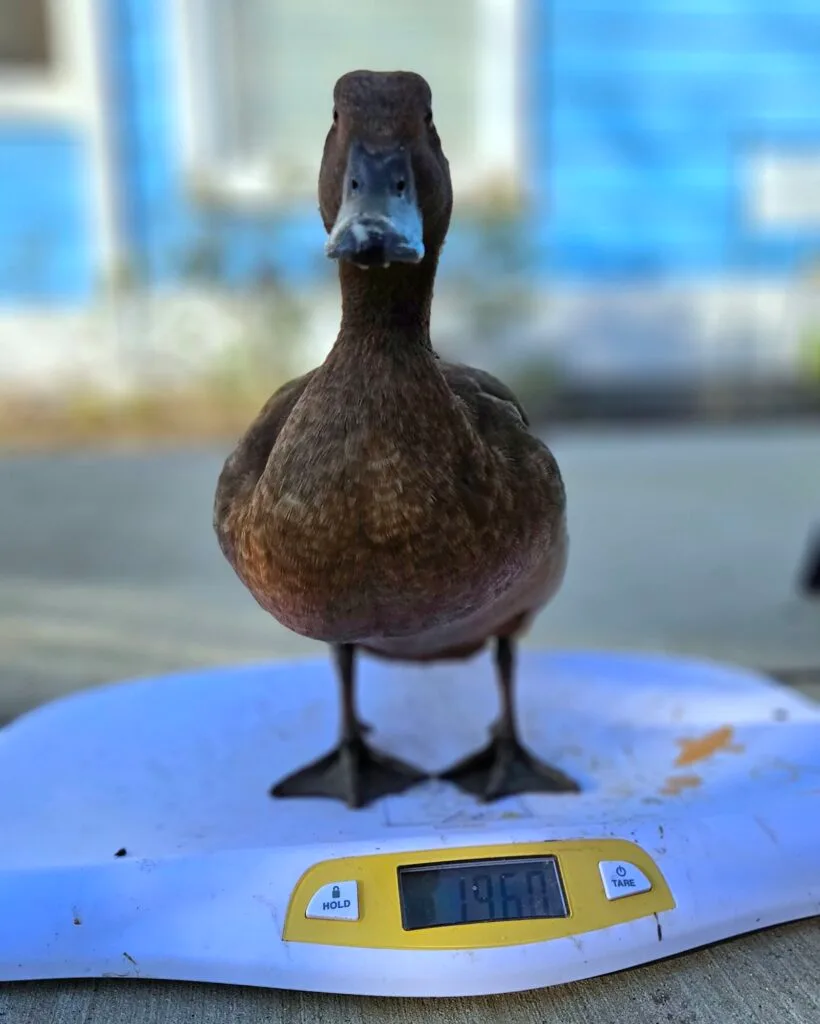
3. Be Mindful of Artificial Lighting
Artificial lighting can trick ducks into laying more eggs than their bodies can handle, increasing the risk of prolapse.
- If you use artificial light to extend daylight hours, limit it to 10-12 hours per day and avoid sudden changes in light exposure.
- Over-exposure to light can lead to over-laying, especially in young ducks who haven’t fully matured yet.
4. Provide Safe, Comfortable Nesting Areas
A safe, comfortable nesting setup can help prevent vent injuries and excessive straining during laying.
- Use soft bedding like pine shavings or straw to cushion eggs and prevent vent trauma.
- Make sure nesting boxes are private and quiet to reduce stress. Ducks that feel rushed or stressed while laying may strain more than they should.
5. Consider Breeding Carefully
Some ducks are more prone to prolapse due to genetics or laying extra-large eggs. If a duck consistently lays massive eggs, she may not be the best choice for breeding.
- If you’re breeding ducks, select birds that lay normal-sized eggs and don’t have a history of reproductive issues.
- If a duck is struggling with egg size, consider hormone implants to slow down laying and give her body a break.
FAQs About Prolapsed Vent in Ducks
1. Can a duck survive a prolapsed vent?
Yes! With quick treatment and proper care, many ducks recover completely. The sooner you act, the better the outcome.
2. How can I stop my duck from laying too many eggs?
Try reducing artificial lighting, adjusting her diet, and if needed, consider hormone implants to slow down egg production.
3. Can a prolapsed vent heal on its own?
Sometimes mild cases retract on their own, but most need at least some intervention to prevent recurrence.
4. Should I use antibiotics?
Only if there’s an infection. If the area looks red, swollen, or has discharge, consult a vet.
5. Can a prolapse happen again?
Yes, especially if the underlying cause (like oversized eggs or calcium deficiency) isn’t addressed. Preventive care is key!

Final Thoughts
Dealing with a prolapsed vent is stressful for both you and your duck, but with the right care, she has a great chance at recovery. The key is acting fast, providing proper support, and addressing the root cause to prevent future issues.
Have you ever treated a prolapsed vent in your flock? Share your experience in the comments—I’d love to hear how your ducks recovered! 🦆💛
🩺 This article is part of our Duck Health Conditions Series.
Related Articles
➡️ Breaking Down Egg Binding in Ducks: What Every Duck Keeper Should Know
➡️ Soft-Shelled Eggs in Ducks – Everything You Need to Know
➡️ Hormone Implants for Ducks: Leuprolide Acetate and Deslorelin Acetate
➡️ Prolapsed Phallus (Penis) in Pet Ducks
➡️ Essential Nutritional Needs of Ducks: A Complete Overview
➡️ Emma’s Prolapse Recovery Journey

